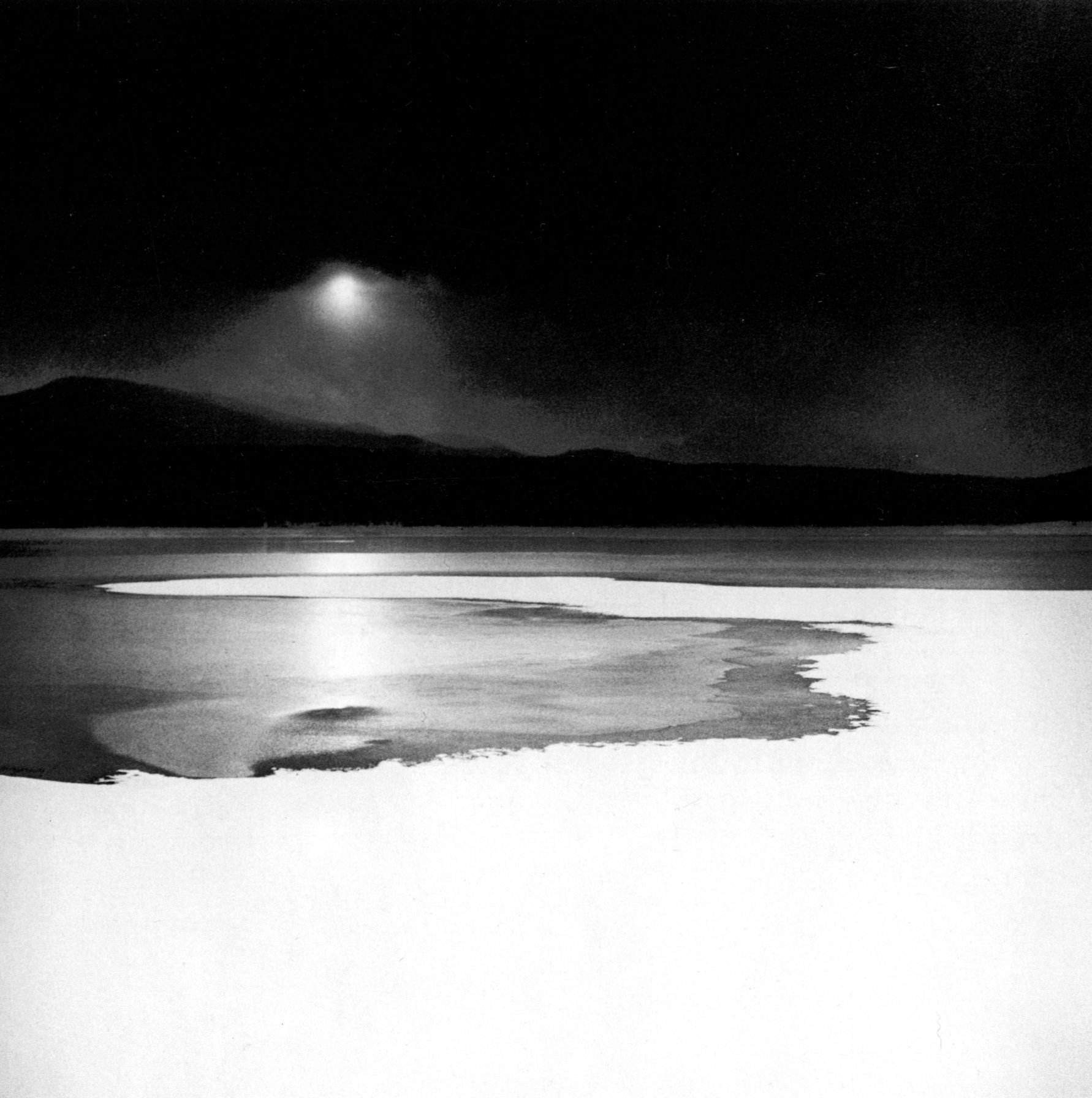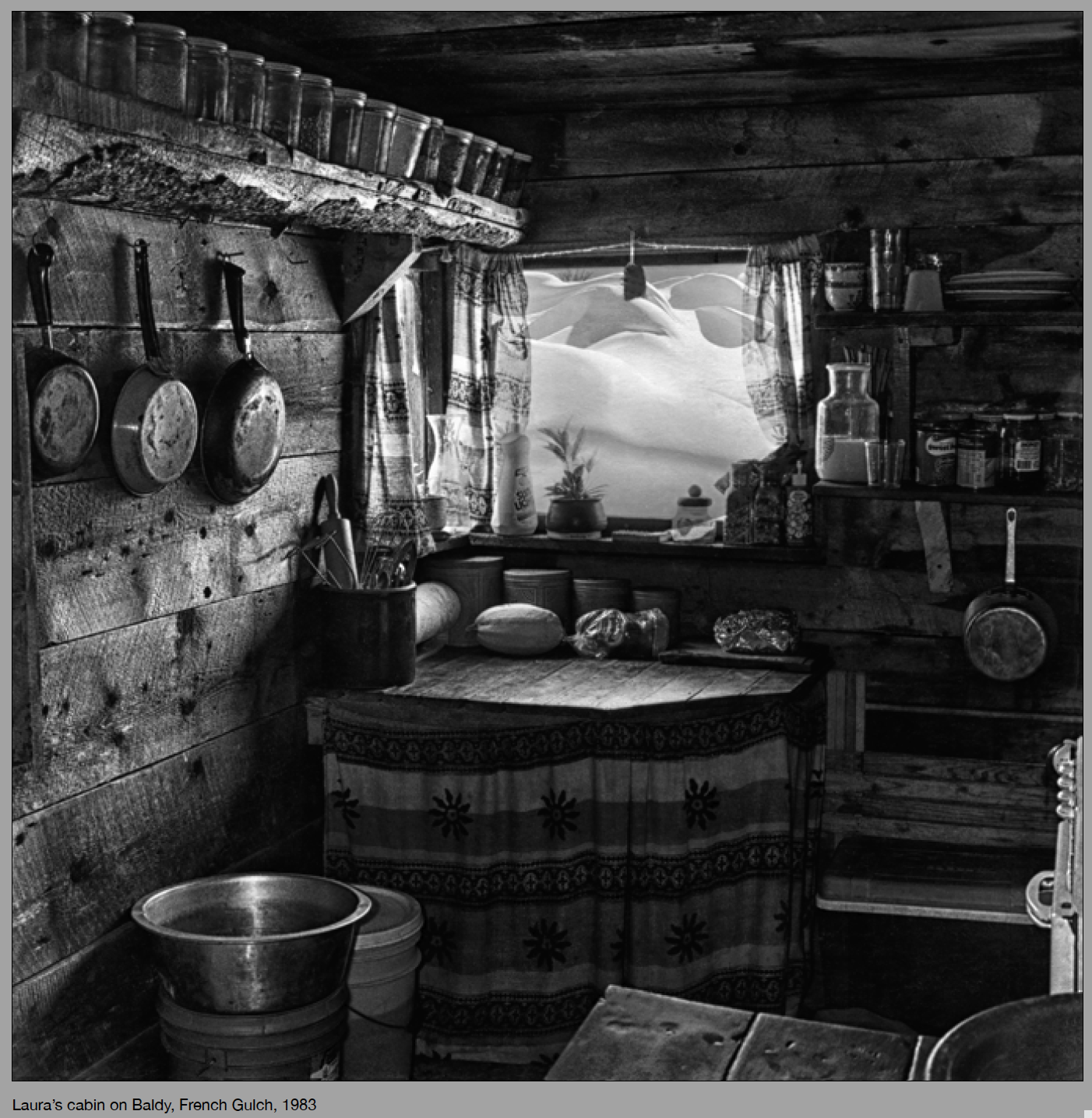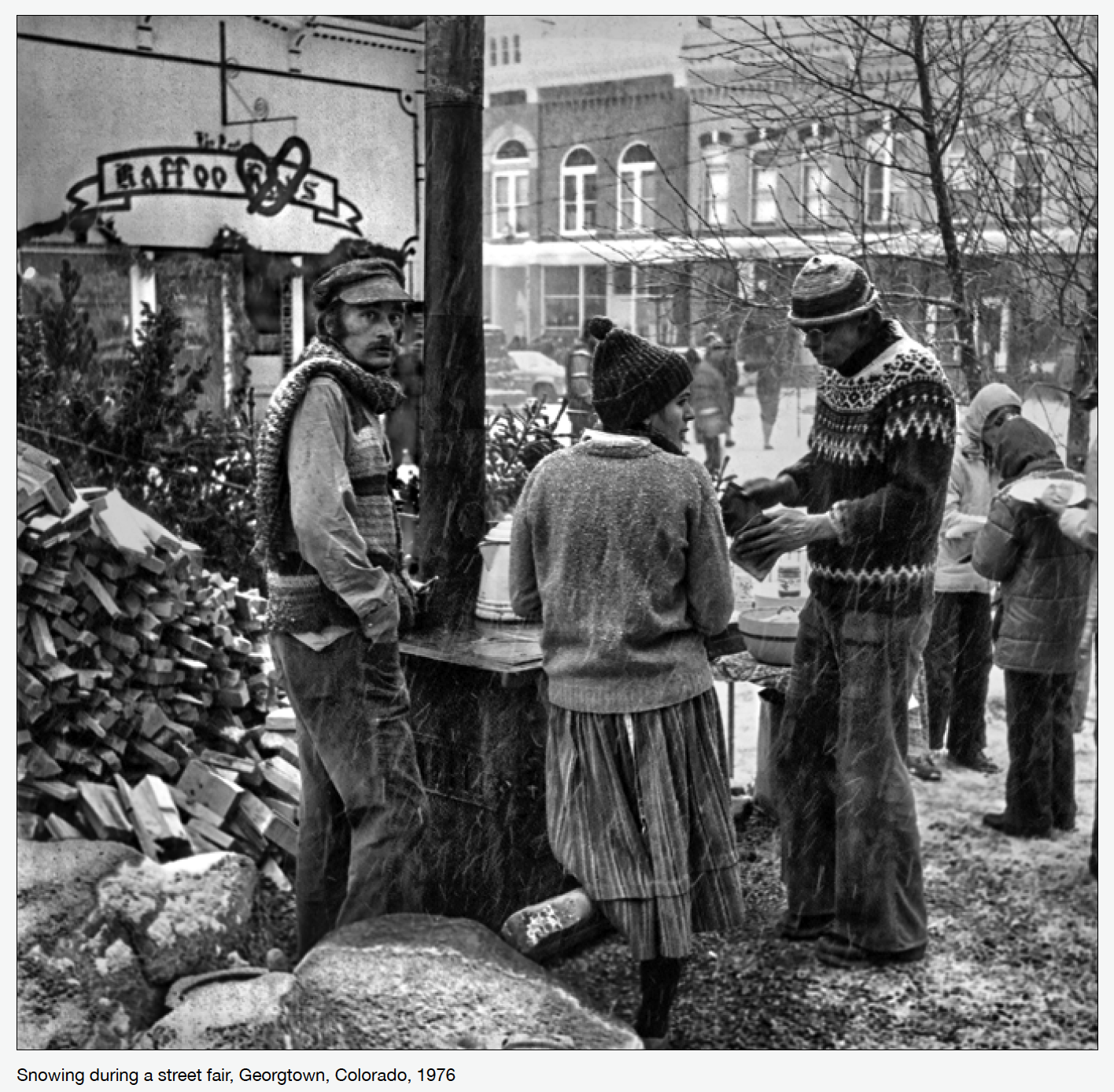Kent Gunnufson (b. 1946) is a Granby-based photographer and broadcaster. His “PhotoTalk.TV” website, which began life as a community television program in 1993, is a unique archive of interviews with some of the state’s foremost late-20th century practitioners. In total, Kent estimates that he has over one hundred interviews archived. Among his subjects are Cole Weston, John Ward, Hal Gould, James Balog, Mark Sink, and Al Weber, the founder of the Victor School summer workshop near Colorado Springs.
In 1994, Kent became an independent producer for NBC and CBS’s affiliate KCNC-4. His segments promoted local artists and were part of Mosaic’s programming that won a national award in 1998. Kent’s award-winning documentary Bumming Colorado’s Ski Country was an official selection of the Breckenridge International Festival of Film, and received a Platinum Remi Award at Worldfest Houston in 2014. His books include Tracking the Snow-Shoe Itinerant (1981) and the recent Rocky Mountains: A Self-Portrait (both Snowstorm Publications). This interview was conducted on Zoom in June 2021.
A hanging tree was created from erosion initiated by the road cut near the top of Hooser Pass, Summit County, Colorado, circa 1978. From Rocky Mountains - A Self-Portrait.
RJ: Where did you grow up, Kent?
KG: In southern California. We took a trip at least once a year. When I was eight years old, we went to Yosemite and I insisted on taking pictures. My dad trained me how to use his little Argus C3 camera. I took all the pictures on that trip, and right away it was a passion.
RJ: Was that a little half-frame camera?
KG: No, it was a 35 millimeter full frame, film camera. But all manual - it was a popular camera after the war. They were a nice little camera.
RJ: Were you looking at other photographers’ work?
KG: Not until later. When I went to college, I inspired my roommate to get more into photography and he in turn started inspiring me. He showed me Ansel Adams's picture of Mount Williamson, and it changed my whole life.
RJ: Did you support yourself through photography right away, or did you fall back on a profession?
KG: I was born into the construction trades. All my uncles were contractors. My dad was contractor; he was a tough worker. I learned all the way through school - I was always working summers in construction. Then I got a degree in small business management (from the University of Colorado) and moved to Aspen.
When I got there I tried like hell to find a job that fit my degree. There was just no availability - everybody in the town had a degree. But they needed construction workers really bad. My experience was so much more than theirs, but I started working as a journeyman. It was my only choice up there.
RJ: That was around '66, '67?
KG: Right. From '65 to '69.
RJ: Did you have to go to Vietnam?
KG: No, I didn't. And one of the reasons I went to Aspen right after graduation was that I thought I would be going to Vietnam. And I thought, Why disrupt my life someplace when I can just go there and have some fun for a while, and then go off [into service]. But I had some serious medical things that kept me from getting in.
RJ: You created your book The Snow Shoe Itinerant (above two photo galleries) by matching original 19th century text by a Methodist minister named John Lewis Dyer with your own images. How did that come together?
KG: Well, I was looking for an idea for a book, and I saw Eliot Porter's book on John Wesley Powell’s trip through the Grand Canyon, I think it was. (1) He put the historic texts with his photographs, so when I became aware of John Lewis Dyer, I'm thinking, I could put my pictures to his words, and that's where that came from.
RJ: So did you match the words to the photographs or the photographs to the words?
KG: Really neither. I edited his texts and considered the more interesting parts. I edited out a lot of his rantings on religion and put some of his quotes next to some of my pictures. His family all loved it. They said it was the best interpretation of his diary they’d seen. They really loved it.
RJ: Did you have to get their permission to do it?
KG: No, it was all public domain.
Two page spread from Rocky Mountains - A Self-Portrait.
[In the early eighties, Kent was showing his work in several commercial photo galleries. On the advise of gallery owner David Hills he also made a formal portfolio of his images, to promote sales.]
KG: Right after I did the portfolio, Colorado went into their recession and things just stopped. And I had to leave the area just to go to California to find work. When I came back in 1990, Denver was still in recession so I'm still working construction trying to survive, taking care of my son, when I started my PhotoTalk series, at DCTV. I was going to do some promotion of my work through a video - that's why I started it. Then I got into documenting other people's stories.
RJ: Right. So how did you pick up your background in broadcasting?
KG: [ECTV] was a professional facility with broadcast cameras and equipment you could check out, crews, sound rooms, editing suites, and they would basically teach you the industry. I'm like, ‘Wow, I like this,’ and I learned. So PhotoTalk was all me as a newbie learning the process, it was all just learning.
RJ: Where are those tapes now?
KG: Some of them are online [on PhotoTalk.TV], but I've got all these archives. I've probably got over 100 interviews. I started out just wanting to do your average photographer who was serious about their craft. And one of my crew people said, ‘Oh, well, we do so-and-so’ [celebrity people] so I got to thinking, Well, it doesn't hurt to ask.” And what I found out was, there was a need for these people to show their work and express their ideas. So yeah, I got accepted by just about everyone I asked.
RJ: Have you transcribed the interviews?
KG: No, but it's something I’ve wanted to do.
Al Weber at the Victor School, ca. 1980.
Kent Gunnufson: How much do you evaluate someone's technical abilities in a print, to give it credibility?
Al Weber: Well, I expect craft. That's personal. Some people are very anti-craft. … If you buy a house, you'd like the door to fit, you'd like to have the roof not leak, you'd like to have the toilet flush. When I look at a photograph, I'd like it square on the mat board flat, no rocks underneath it. I'd like to have the scale all there, minimum grain. And minimum grain might be a lot of grain. But I'd like to see the craft, not only on a photograph, but I like craft in everything. I like it in houses. I like it in cars. Yeah, I like it in cameras. From PhotoTalk.TV interview, 1993.
RJ: I know that Al Weber is someone who’s been very important to your career. He was a fine art photographer who taught with Ansel Adams at the Yosemite Workshops for almost twenty years, and locally is well known for operating a summer photo workshop in Victor, Colorado in the seventies. Can you talk about him and your experiences at his school ?
KG: What I really enjoyed about Al, he was so strong. He's convictions were so strong. Al had many programs at the Victor Shop; one of them was just touring around Colorado and visiting artists and stuff. He'd call me and ask, What are you doing this afternoon? I got a group of about fifteen, twenty people here. Would you consider coming down and meeting with us? And bring some of your work.” I’d say, “Oh, sure.” And that was all very last minute, I was just stopping in, so that was fun.
In one of my PhotoTalk interviews he talks about black and white being the artist's medium and color being on the fringes. But he just felt very strongly about color and that's what he did [in his own work]. And eventually the art world totally accepted it.
RJ: Your biographical publication, Rocky Mountains - A Self-Portrait [images above] was published recently. Can you tell me about that?
KG: I spent a whole year going through press proofs, and I would like to say that I'm so excited about this project because it's not just a picture book. I really believe that my texts and the quotes and everything all tie together to tell a story that’s more than just any individual story working by itself. And I'm really excited about getting that out.
RJ: Well, Kent, I really have appreciated being able to go to your website and listen to those interviews. It's been a great source of information. Thank you for meeting with me.
KG: Well, thank you. That means a lot to me.
(1) Down the Colorado: Diary of the First Trip Through the Grand Canyon; words by John Wesley Powell, photographs by Eliot Porter (1969).
View the PhotoTalk.TV interviews online here. Rocky Mountains - A Self-Portrait is available from Mountain Magazine, Amazon and other online stores.
The Colorado Photo History blog is the online presence for “Outside Influence,” a book project by Rupert Jenkins. Please leave a comment or a suggestion for future posts, and visit @coloradophotohistory on Instagram.
#coloradophotohistory @coloradophotohistory #outsideinfluence #phototalktv #landscapephotography #snowshoeitinerant




















